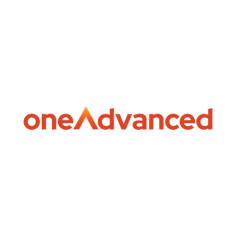Unconscious bias in hiring: the invisible barrier to DE&I – find out more with Advanced
A surprising revelation from this year’s Annual Trends Report is that only 38% of the survey respondents agree with the statement:
‘We work hard to remove bias in our recruitment practices.’
This survey finding goes beyond just a statistic, it highlights the potential harm that unconscious bias may be inflicting in the work environments across UK. It showcases how despite our perception of living in a culturally diverse and inclusive society today, there is still a significant need for continuous efforts in the workplace to further promote diversity, equality, and inclusivity.
Unconscious bias has the power to corrupt the core values of diversity, equality, and inclusion (DE&I) within your company. Its consequences ripple through individuals, organisations, and even the nation as a whole, making it an issue that simply cannot be ignored.
Understanding unconscious bias
As human beings, we naturally tend to develop affinity towards like-minded people or those who possess qualities we find desirable. These unintentional, unknowing preferences we show constitutes ‘unconscious bias’. When these biases influence our decision-making during the hiring process, it becomes ‘unconscious bias in hiring’.
It is important to note that these biases often do not stem from explicit discrimination but are largely shaped by stereotypes, cultural attitudes, or personal experiences, that may impact the way individuals evaluate and make decisions about job applicants.
How does unconscious bias impact hiring?
Unconscious bias can affect several aspects and stages of the hiring process, starting from the very beginning with the screening of resumes. Recruiters or hiring managers may be influenced by preconceived notions related to factors like educational backgrounds, prior experiences, or even the applicant’s name. This can result in a limited applicant pool to interview with minimal diversity and candidates who share similar characteristics.
At the time of interviews, unconscious bias may be apparent in the way interviewers perceive and evaluate candidates. Prejudices linked to appearance, accent, or non-verbal cues may be at play, providing certain candidates with either an advantage or a disadvantage. These advantages can result in unfair assessments since they are not directly tied to a person’s qualifications for the job.
Additionally, affinity bias may also come in picture at this stage, which is based on unconscious inclination towards individuals who are from similar backgrounds, interests, or experiences.
Known as confirmation bias, there are instances where interviewers intentionally seek information that confirms their initial opinions about the candidate. During this process, they frequently overlook contradictory evidence, potentially resulting in flawed hiring decisions.
Stereotypes often play a significant role in shaping individuals’ unconscious biases. Not just race and cultures, stereotypes can form around age, gender and even the person’s area of residence.
Over time, unchecked unconscious bias in successive hiring decisions can lead to the formation of an echo chamber, where individuals with similar backgrounds and perspectives dominate the workforce. This homogeneity can stifle creativity and innovation within the organisation, posing a significant obstacle to its growth and development.
Combatting unconscious bias
It is undeniable that there is a need for continuous efforts to eradicate unconscious bias during hiring and to maintain diversity, equality, and inclusion at the workplace. Below are some effective strategies that can be adopted to reduce unconscious bias in the hiring practices.
Diverse hiring panels
With each individual contributing their own unique point of view, involving a variety of people in the hiring process can help bring varied perspectives and mitigate individual biases.
Unconscious bias training
Leaders, hiring managers and even employees should be given training to recognise and address their unconscious biases. This can raise awareness and help individuals to make objective and fair decisions.
Structured interviews
Adopting a standardised interview process with a predefined role-specific questionnaire that applies to all candidates. Clear and measurable criteria for assessment should also be established. This can be instrumental in deterring confirmation biases and also ensures that the evaluation criteria for every candidate are the same and are based on job-related competencies.
Blind resumes
This involves excluding personal information, such as name, gender, or age, from the resumes during the screening phase. This ensures that qualifications and skills are the primary focus during selection, leaving little to no room for unconscious bias to influence decisions.
Furthermore, technology can aid in achieving this. An Applicant Tracking System (ATS) can facilitate blind recruitment by keeping candidates anonymous.
Regular audits of the hiring process and gathering feedback from interviewed candidates should be conducted.
In addition, organisations should develop and promote diversity and inclusion programs to cultivate a more inclusive culture and attract a broader range of candidates.
Fostering DE&I in the workplace
Bias can result in the exclusion of highly qualified candidates who do not conform to the expected mould of the job requirements. This, in turn, leads to missed opportunities for organisations to access a broader talent pool. Unconscious bias often results in a lack of diversity in hiring, preventing organisations to have individuals with unique perspectives and talents working for them, thus hindering them from benefiting diversity of thought.
Unconscious bias can erode diversity within the workforce, leading to a perception of unfair hiring practices, which, in turn, results in lower employee engagement and satisfaction. Consequently, it can damage an organisation’s reputation as an employer and discourage underrepresented groups from applying, creating a self-perpetuating cycle.
Prioritising DE&I policies is crucial, and it’s essential to assess your organisation’s current stance for effective action. Our latest Trends Report offers valuable insights into the state of DE&I. Download the report to discover intriguing facts and figures that shed light on DE&I in the UK workforce. Additionally, the Trends Report provides a comprehensive overview of various aspects of businesses in the UK.



